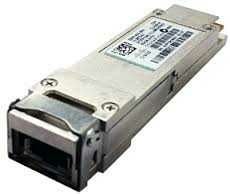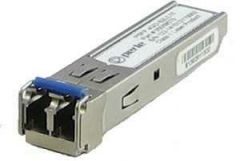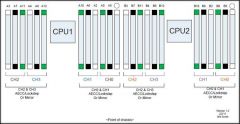![]()
![]()
![]()
Use LEFT and RIGHT arrow keys to navigate between flashcards;
Use UP and DOWN arrow keys to flip the card;
H to show hint;
A reads text to speech;
59 Cards in this Set
- Front
- Back
|
What iDrac tiers are available under Overview? |
Server, iDrac settings, Hardware, Storage, Host OS |
|
|
Define: CSIOR how to enable? |
Collect System Inventory On Restart F2>idrac settings>life cyclecontroller> enable or disable F10> hardware configuration> hardware inventory>CSIOR Lcc>platform restore>parts replacement configuration>csior |
|
|
Parts Replacement Feature |
Feature in the LCC. LCC>Platform Restore>Part Replacement Configuration. Can automatically update firmware on replacement hardware CSIOR must be enabled in LCC Requires iDRAC Enterprise and vFlash SD card |
|
|
Memory Operation Modes |
Optimizer Mode c1[1]c2[2].... OS sees all memory (default) Advanced ECC c1[1,2], c2[1,2].... protects from singlr DRAM chip failures during operation Spareing OS only sees 3/4 of memory be because 1 Dimm in each channel is used for spare Mirror OS Only sees half of memory |
|
|
Processor Settings |
Adjust cpu features and cores per CPU Vertual Technology enabled if Vm is needed |
|
|
iSM, what can it do, and how to install? |
iDRAC servive Module Remote iDRAC hard reset* iDRAC access via Host OS via GUI, WSMAN, RACADM ETC. .. iDRAC Snmp alerts If no omsa replicatea OS logs into LCC Overview>Server>service Module Download and install Via FTP site Via usb Via iso Via local repository (YUM for linux) |
|
|
System Setup (bios) to enable Life Cycle Controller |
F2> iDRAC Settings>Lifecycle Controller> enable> save and reboot |
|
|
Configuring Network setting on a Nic in the LCC |
LC settings>network settings>select nic>select IP address source>finish |
|
|
What Firmware Update File type is needed to update through the LCC and iDRAC |
.EXE .ISO .Repository .Efi .BIN can only be used inside the lynix IMPORTANT. (./filename) Dell Driver Packs should be installed prior to installing the OS. Availabke through "Platform Update" in the LCC Idrac lcc firmware updates are the only updates that do not require restart Idrac can only do firmware and bios |
|
|
Back Up Server Profile Options |
Lcc>platform restore>backup server profile 1.Hardware and Firmware Inventory 2. LCC Firmware images, data, config 3. iDRAC firmware and config
By default save on the nvm in the front LCD Requires: vflash that has already been initialized and enabled with enough space. Valid 7 digit service tag Valid iDRAC license |
|
|
Location of Perform Server Firmware updates iDRAC. And How can they be deployed |
Install and reboot, install next reboot, schedule updates (requires iDRAC enterprise and access to the dell ftp or a custom repository) Overview>iDRAC settings>Update and rollback |
|
|
SUU & how to use it |
Server Update Utility 1.Download SUU ISO Upgrade from OS Platform or Create custome SUU iso from Repository Manager and upgrade drivers from OS level 2. In the iDRAC launch the Virtual Console and Map CD/DVD to drive or iso. Make aure to select Next Reboot>Normal Boot before restarting
|
|
|
OME, what does it do? Tabs in main menu? |
Open Manage Essentials OME allows you to manage multiple devices in your enviroment from one host as long as all the devices have OMSA (Open Manage System Administrator
Tabs in OME: Home Manage Deployment Reports Preferences Logs Tutorial Extensions |
|
|
Dell Support Assist, how to install, and how to add devices to DSA |
OME plug in that monitors and proactively reports on the enviroment. Install by downloading ome bundle and selecting OME, SupportAssist, and Repository Manager. To add devices to DSA go to Devices>device inventory>add>add device |
|
|
Diag LEDs |
On HDD, PSU, NIC, AND DC PSU. amber means something is probably wrong. Flashing Green, HDD Nic and Psu working but doing something different. DC PSU mismatch configuration. Green flashing then turns off (psu only) incompatable configuration Solid green all clear Green>amber>off is a predictive HDD failure |
|
|
Troubleshoot Memory |
Check for LCD status messages Check population mode in bios and ensure configuration is correct. Check memory type for miss match (RDIMM and LRDIMM cant mix cant mix UDIMM either) Pull logs, Tsr or Dset check for errors Reseat/Memory dance. Swap memory DIMMs into different sockets channels, banks, and controllers. Test Known Good
|
|
|
Other Troubleshooting |
Check settings and configuration Check LCD for status message Verify if past boot by checking virtual console in IDrac if no video or no monitor. Pull logs Firmware updates/Drivers Reseat Test KG port/device |
|
|
In the LCC what can you do? Categories |
Lifecycle Log Firmware Update Hardware configuration OS deployment Platform Restore Hardware Diagnostics Settings System setup |
|
|
Raid Slicing |
Have more than 1 raid share the space on 1 or more physical drives.
|
|
|
OMSA, what can it do? |
Open Manage Server Administrator Monitors health, details, and performance of the device it is running on. Set actions to perform if errors Enhanced Storage Management - see all attached storages, configure hot spares. Reports errors to support assist Configure iDRAC ip adressing Logs -hardware logs, alert logs, command logs |
|
|
Configuring email or snmp alerts in iDRAC |
Overview>Server>Alerts> enable alerts>select Alert Filters>snmp and email settings>configure destination IP address and/or Destination Email address and/or the SMTP (email) Server Address settings And Overview>iDRAC Settings>Network>Register iDRAC on DNS and configure Domain Name and enable snmp agent if needed Email alerts require enterprise license |
|
|
Configuration Requirements for hot swappable Power Supplies. |
Hot Spare Enabled Both PSUs must be identical in every way. And PSUs need to be hotswappable capable |
|
|
SOL, and how to configure iDRAC Communication. |
Serial Over Lan, F2> system BIOS settings> Serial Communications (enabled and set to proper setting depensing on your set up) Boot to iDRAC>Overview>iDRAC settings>Network> Serial or Serial over lan depending on set up. May also need yo go go IPMI settings depending on configuration
|
|
|
RACADM, common commands |
Racadm racreset * soft, hard, cold* " racresetcfg " getsvctag " getsysinfo " getniccfg " raid get pdisk (for physical disks) " raid get vdisk (for virtual disks) " get -f config.txt (all idrac setyings in a file) " License Import - f |
|
|
Add a user to the iDRAC through Gui and using RACADM |
Overview>iDrac Settings> User Authentication> Local User> Configure User
Or on iDRAC7
RACADM cfguseradminindex=XX And RACadm cfguseradminusername= X After confirming index and user are available using Getconfig -u <username> Or Getconfig -g cfguseradmin -i <index> You can also configure active directory to provide access to the iDRAC (requires idrac enterprise) |
|
|
Verify iDRAC Firmware Version |
Overview>Server>Summary>Server Information>Firmware Version |
|
|
LCC where to find the systems inventory? How can it be viewed and what settings are available? |
Hardware Configuration > Hardware Inventory You can " View current inventory" or "View Factory Shipped Inventory" Can enable CSIOR And export Inventory |
|
|
where you would set up a new Virtual Disk in the iDrac |
To create virtual disk: 1. In the iDRAC Web interface, go to Overview → Storage → Virtual Disks → Create. The Create Virtual Disk page is displayed. |
|
|
Different ways to recinfigure or expand a raid array |
Reconfigure only an option for Raid 0, 1, 5, 6. If these are sliced/spanned you can not reconfigure. Reboot> F2 to System Setup > Device Settings > Raid controller (that has configured your existing array) >Virtual Disk Management >Select desired VD >select “Reconfigure Virtual Disk” from dropdown > Go > Select desired raid level from “new raid level” dropdown menu. Through Raid Controller Bios>vd management operations OMSA>System>storage>raidcontrollers>available tasks>recinfigure |
|
|
Power performance options explained |
Performance- best performane at the cost of using a lot more power Performance per Watt (DAPC) - most efficient ran by idrac. Loses almost no performance and reduces power consumtion by a lot Perdormance per Watt (OS) - allow OS to control power |
|
|
What determines the speed of an array |
Lowest speed drive in array is the one used.
|
|
|
Set asset tag after replacement |
System BIOS, miscilianious |
|
|
Memory Module installation guide |
Highest ranks or highest capasity Must got first in each channel Max of 2 rank 4 per channel. Populate all white banks first then black, then green
Follow memory population mode rules and channel rules
|
|
|
Retire system, where and what does it do? Can you do more? |
Lcc>hardware configuration>retire or repurpose. Delete server-related data such as system. Configuration, logs, PERC NV cach. Does not remove iDRAC license. Use LC remote servicea to delete: BIOS, iDRAC, LC Data, Diagnostics, Driver Packs |
|

What is this? |
QSFP |
|

What is this? |
SFP |
|
|
View current Firmware virsions in LCC |
F10>LCC>Firmware>View current versions |
|
|
OME, discovering devices |
Manage>discovery and inventort>add discovery range |
|
|
Ome, where to create jobs and tasks |
Ome>Manage>remote tasks>create deployment task |
|
|
Ome, device updates |
Manage>System Update>select resource |
|
|
Be able to draw draw and reference this picture for memory inatallation configurations. |

|
|
|
F2>BIOS settings>what menu options are here? Call outs for each option |
Sytem information - bios version Memory settings- memory mode Processor settings- cores per cpu Sata settings-sata mode Boot settings-boot mode Integrated Devices-slot disablement Serial Communication- enable System Profile Settings- system power profiles System security- tpm miscellaneous settings - set service tag |
|
|
Different ways to Rollback firmware |
Lcc>firmware update> rollback Idrac>idrac settings>update and rollback> rollback CMC web interface> server overview>"iDRAC rollback process" RACADM>SWINVENTORY>take note of FQDD>racadm rollback <fqdd> |
|
|
Different waya to Import iDRAC license |
Overview>server>licenses Idrac web console>license>license options>import Racadm license import -f LCC>platform restore> license import |
|
|
Idrac User Profiles |
Admin User- all powerful Power User-log in, server action commands Guest User- log in 😣 |
|
|
Ome, add device to bare metal and repurpose device groups |
Ome>deployment portal>add device to baremetal/repurpose group>target bare metal server |
|
|
Accessing iDRAC and LCC |
(Require Restart) F2 > system setup> iDRAC settings F10> LCC> (Not require Restart) Access iDrac Web consol |
|
|
How to set Set Primary power supply and power caps. |
Overview>server>power/thermal>power configuration>primary power supply uniy or iDRAC Power Cap Policy And F10>Lcc>hardware configuration>config wizard>idracsettings> power configuration
|
|
|
Easy Restore for Motherboard replacement |
Press Y to restore service tag, license and diagnostics information. Press N to go to LCC platform Restore (requires back up stored on network or flash memory)
Easy Restore conatians following in the vflash memory in the front panel. Bios, idrac, and LOM configuration, Service tag All Licenses Diagnostics information |
|
|
LCC Easiest way to deploy several servers quickly with Windows |
F10>LCC>Platform Restore>backup profile Export SCP(server configuration profile) to a share CIFS or NFS and import that configuration to another server. In order to include stotage information also use the clone option w/ RACADM to export and use on identical hardware Racadm get -f <filename> -t xml -u <username> -p <password> -l <CIFS Share> --clone |
|
|
How to use CIFS and NFS locations for update repositories |
F10>LCC>Firmware Update>Update Repository>Select network share as souce location> sign in |
|
|
Front LCD Panel, what can it do? |
View Alerts, view iDRAC IP or Mac address, user programabke strings, set DHCP, configure iDRAC static IP settings. To reset iDRAC without rebooting system hold down the system identification button of 16 seconds. |
|
|
CMC web interface, what can it do? |
Monitor and manage the chassis. Update and rollback idrac firmware Configure idrac network settings Log into idrac web interface Update BIOS, PERC and supported network adapters |
|
|
VMCLI, what can it do? |
Vertual Media Command Line Interface. To access a remote media and deploy OS on multiple managed systems. |
|
|
System Requirments for Open Manage |
Supported browser 2gb if RAM 512mb free space Admin rights or Root for linux |
|
|
Access OMSA in a web browser |
Default port is 1311 Https://hostname:1311 requires DNS Https://IP address:1311 Host server name= hostname Host Server IP Address = IP address |
|
|
Check if a repositort is current |
In Dell Repository Manager > My Repositories> select repository> run a comparison.> select location of what you are comparing to> click compare> select updates> show report> save |
|
|
Troubleshooting Video |
Confirm power to monitor Reseat cables Test kg monitors and cables Test both front and back vga ports |
|
|
Raid controller set boots disk |
Ctrl +R>ctrl mgmt> boot disk Also can see what the os disk is |

